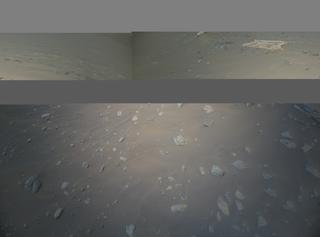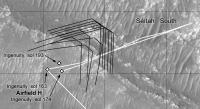QUOTE (Cherurbino @ Apr 2 2022, 11:42 PM)

. . . QUESTION
My calculations of LOS for departure and arrival are surely wrong because the difference between ls_dep and ls_arr does not correlate with the known flight lengths.
If by "LOS" you mean the distance between the rover and the helicopter (which the formulas in your table suggest), then I don't understand why the difference between the distances before and after the flight should correlate with the flight length.
For example, if the helicopter flies on a circle around the rover, the difference between the distances remains zero, but the flight length can take any value.
Generally, the only restriction for geometric reasons is that the flight length cannot be shorter than the difference in distances.
QUOTE
3. Variables for LOS’es at the departure moment are taken from the same line. E.g.: for flight #9 we take sol 133 for helicopter and sol 131 for the rover.
4. To calculate LOS at the arrival the coordinates for helicopter are taken from the next line.
Obviously, the official sol numbers are assigned to the arrival positions. Therefore, in this case, the helicopter took off from position 120, so the helicopter's departure coordinates should be taken from the previous (sol 120) row in the table and the arrival coordinates from the current (sol 133) row.
For sols where both the rover and the helicopter have moved, the question remains as to which moved first. If the helicopter moved first, then the rover was possibly still at its previous position and not at the position with the same sol number as the flight ( but I'm not sure about that) .






























